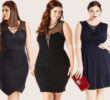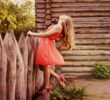A Top Career Choice for Fashion Bloggers… Editorial Design?
- March 1, 2019

Like me, if fashion is one of your biggest passions in life and you’re a keen fashion blogger… maybe a career in editorial design or even another type of design, would be a great fit and play to your strengths? Working in editorial design could mean that you take up a job within a fashion magazine or in the fashion department of a newspaper, for example. It does sound like the ideal career choice?
To explore everything a bit more, I’ve called upon the expertise of UK based foam board printing company: Where The Trade Buys. Has the time come to make your dream career a reality?
Choose a design career that suits you best
Designers are sought after in a range of industries, from marketing agencies to illustration companies. It’s true that you could find yourself in any sector, but what roles are out there?
Editorial design… suited to your passions?
Editorial design is the process of designing magazines books and newspapers — for both online and offline publications. This type of design requires an eye for composition, layout and aesthetically pleasing typography.
To succeed as an editorial designer, you should have the following qualities:
- The ability to recognise attractive content
- Understand what the reader wants to see on the page
- Be skilled in the layout of images and content
Branding… would this area of design satisfy you the most?
Design is a big part of branding for many companies. It helps them project their message to a target market and create a memorable brand image. Some companies have design teams in-house and others outsource to marketing and design agencies. It’s down to you to decide which environment you think you’d enjoy most. In an agency role for example, you could be working with a variety of businesses and projects all at one. As part of an in-house team, you’d work solely with that brand.
How does a branding project work? Here, you’d work closely with the company to determine target markets and talk about how the brand can be best represented visually.
Typography… are you interested in lettering styles?
What is a typographer? These people are trained in the design of type and lettering, another important part of creating visuals. As you’re probably aware, a logo or the typography of a company can become widely recognisable by customers — take Coca Cola for example.
This type of role appeals to people who are interested in lettering styles and getting creative with words. This is quite a niche area, therefore many designers specialise in this alongside other areas of design.
Illustration… from app design to cartoon creation
A common role for illustrators is a job in animation. Or, you might find yourself in a company role who require illustrations to spread their brand message or inform their audience.
As an illustrator you might find yourself:
- Designing posters
- Creating storyboards
- Producing images for books and book covers
- Designing merchandise products
- Getting involved with film and cartoon creation
- Video game and app design
Some illustrators become specialised too in subjects such as science, technology and medicine. Here, they create imagery for text books and material to help readers understand the subject.
These jobs are only a selection of what you could be exposed to as a designer. Conduct plenty of research to find the job that you’re most interested in.
Increase your skillset with more studies and work placements
Although a lot of design roles are about your creativity, there are some things you can do in terms of work experience and studying.
The first thing to consider is a university degree, perhaps in graphic design. Each course is different, depending on the university but most of them cover the following topics:
- The influences of graphic design
- Styles of typography
- How branding and design comes together
To get accepted onto an undergraduate course like this, you’re often asked to bring a portfolio of your work. Through an Art and Design related GCSE or A-level you can start to discover your own style and use the work to create a portfolio for the future.
Gaining some work experience can come in handy too. Why not get in touch with a local design agency or local business? If you don’t mind working unpaid, it’s likely that businesses will take you up on your offer. During university, take the opportunity to do a year in industry too. You’ll hopefully learn more about the industry you’re most interested in and can gain some extra experience to add to your CV!







